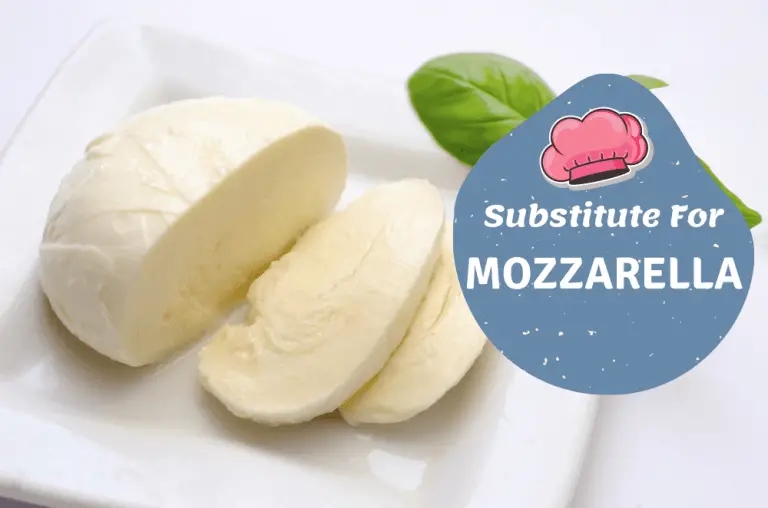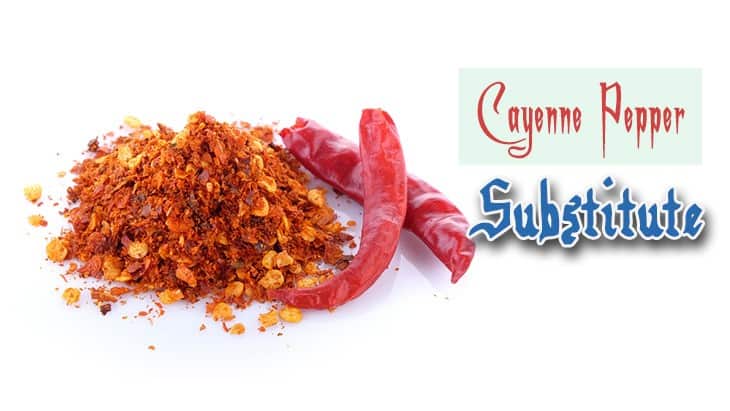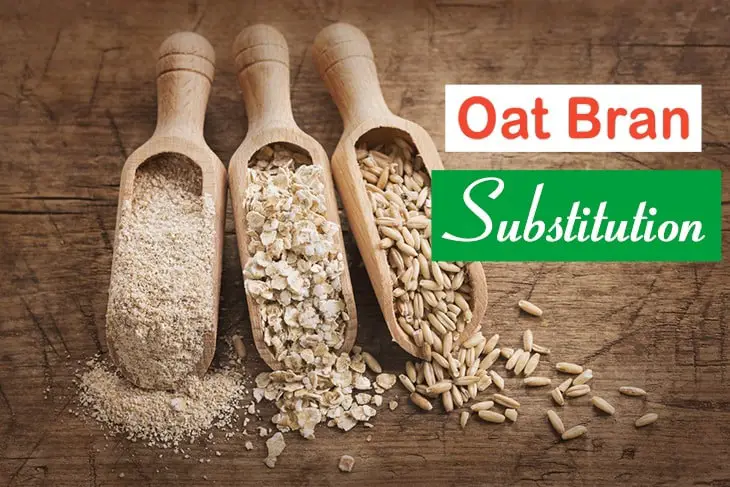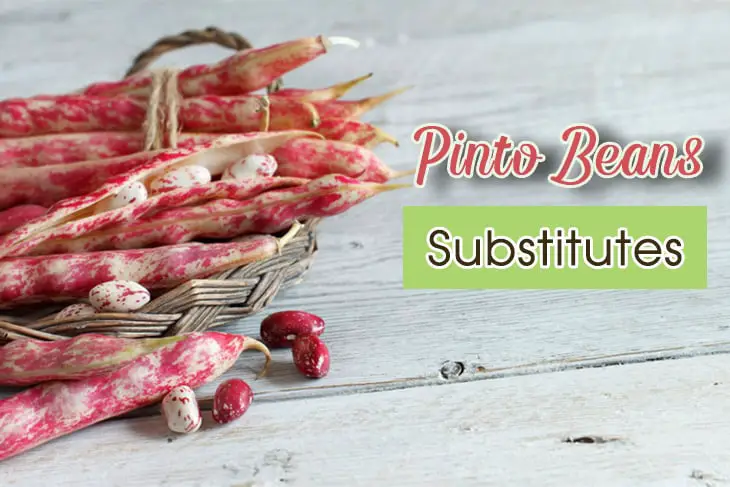
Pinto beans are among the most familiar ingredients in many household kitchens, and you can buy them at any grocery store. However, when you’ve run out of this ingredient but don’t want to go through the trouble of leaving the house for just a can of beans, or maybe you want a difference to your dish, then an alternative to pinto beans can be a great decision.
So let’s read the following article – Substitutes For Pinto Beans, to find out more.
Our List Of Alternatives For Pinto Beans
In the Substitutes For Pinto Beans review, we will introduce the 12 best types of beans, why they’re considered great replacements, and important reminders you should be aware of. So don’t worry! You will pick the suitable one right away.
1. Navy Beans
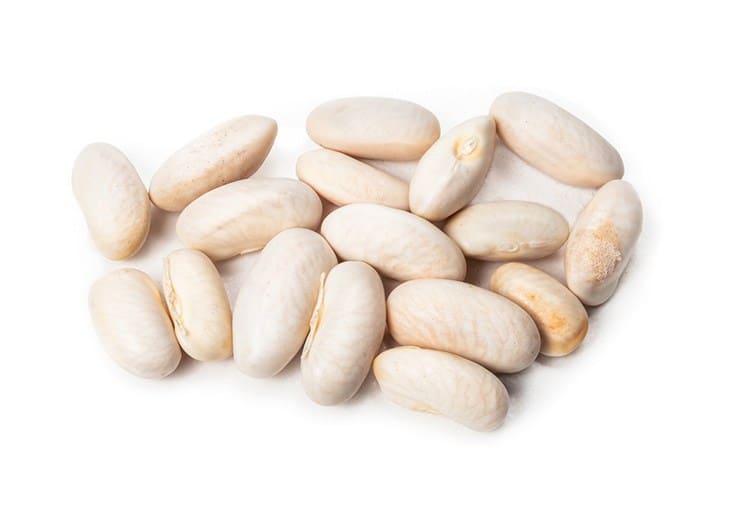
Before the 19th century, this kind of ingredient did not have that name; however, when the US Navy used them for the soldiers’ meals, people started calling them navy beans. They are also known as Boston Pea beans or Haricot beans.
Like pinto beans, this alternative has a flat and oval shape with a mild and creamy taste. However, the color of the pinto beans is pale pink when cooked, while navy beans are white; hence, the dish may not have the color you might expect.
Navy beans are perfect for dishes such as purée and soup. Not just that, they can add a creamy and rich flavor to your sauce, for example, a delicious spicy tomato sauce.
Compared to pinto beans, this ingredient is much healthier. It contains more calories, and its index of dietary fiber is higher than pinto beans. That means this substitute is much more suitable for vegetarians.
When using navy beans, there are two things to remember. The first one is to soak them in cold water for about 3 hours to make cooking easier.
You should also take 20 to 30 minutes of cooking them. Both boiling and soaking will help wipe out all the anti-nutritional compounds and decrease the symptoms of flatulence.
2. Chickpeas
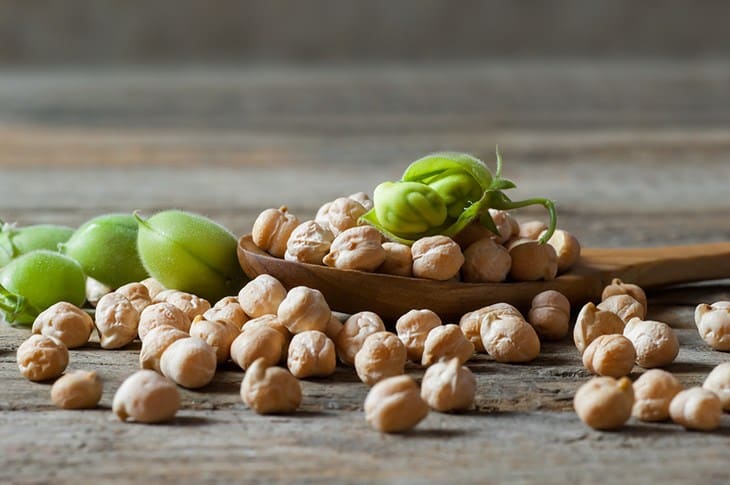
Chickpeas can be one of the best pinto beans alternatives. There are two kinds of them: the larger, light tan Kabuli and the variously colored Desi. However, either color is still nutritious and beneficial to your health.
Known as Garbanzo Beans in Spain or Ceci Beans in Italy, chickpeas are famous worldwide as they are easy to use, and their rich and nutty flavor can go with many dishes. For example, you can use them in soup or salads.
Chickpeas are also the main star in Hummus or Falafel, traditional dishes in the Middle East.
In terms of nutritional facts, chickpeas provide a variety of vitamins and minerals. What’s more, in many vegans’ diets, chickpeas can be an alternative to pinto beans as they contain an excellent source of protein and dietary fiber.
With those health benefits, chickpeas will help you with blood sugar control and a great company fighting against certain chronic diseases such as cancer or diabetes.
However, to reduce cooking hours, you should soak chickpeas in water and leave them overnight. Also, be aware that mature chickpeas will not disintegrate when cooked.
3. Lentils
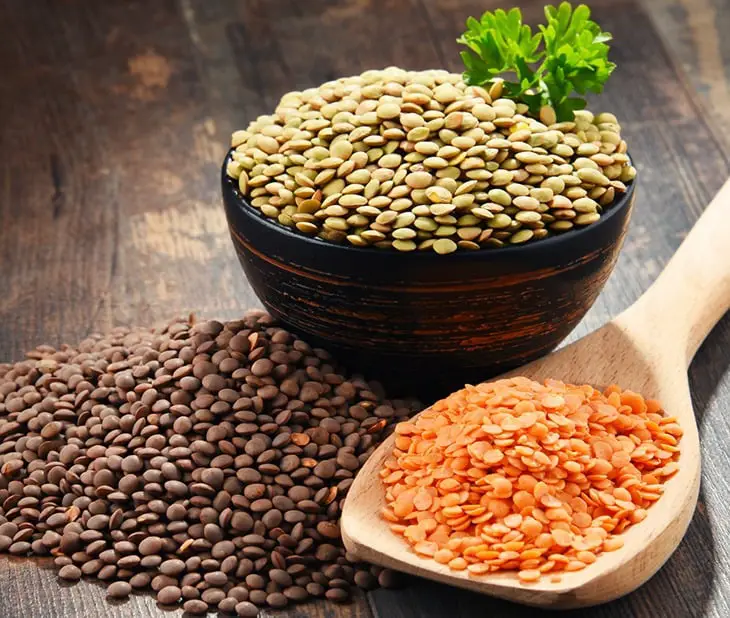
Being used widely in Asia and North African, lentils have many types depending on their colors. Some of the most common lentils are brown, black, yellow, red, and green lentils.
With this wide array of options, you can make different dishes, so lentils are versatile, useful, and they can be found anywhere.
In terms of flavor, brown lentils have an earthy taste and still keep their shape when cooked. Meanwhile, red lentils’ flavor is nutty and sweet, perfect for making Dal – an Indian traditional food.
Lentils are nourishing with a great amount of nutrition. This legume carries much higher calories and proteins than pinto beans, meeting your recommended daily need for nutrition.
In addition, lentils are beneficial to your heart and vascular system, so adding lentils to your daily meals will help prevent certain diseases like hypertension.
Unlike pinto beans, you do not need to soak lentils in cold water before cooking. However, it will be best to rinse the legumes to wipe out all the dirt and grits.
While cooking, you should add a little bit of olive oil to benefit from all the ingredients’ advantages.
4. Cranberry Beans
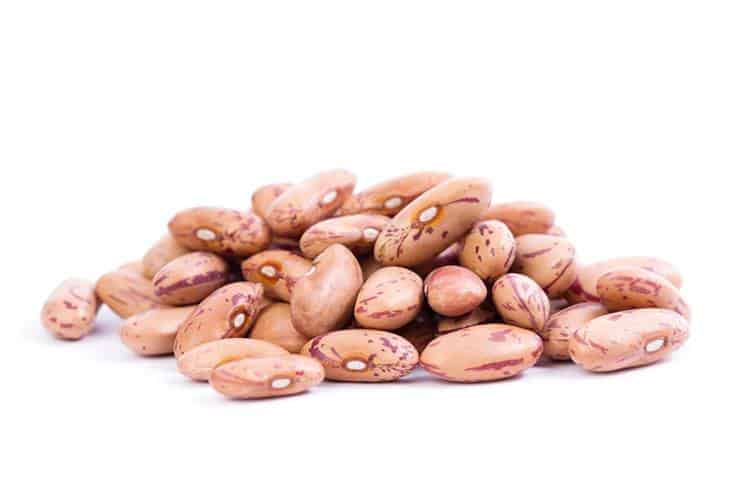
Another quick substitute for pinto beans is cranberry beans. Also known as Borlotti beans, they are from Italy and used widely in many countries such as Italy, Greece, Portugal, and Turkey.
At first sight, you may be confused and hardly tell the differences between pinto beans and their alternative. They look alike; however, cranberry beans are much bigger, and there is a difference in taste.
While pinto beans are nutty and earthy, the cranberry ones are much different – sweet, delicate, and mildly nutty, giving a unique taste to your dish.
Eating cranberry beans has various benefits. Some of them are: helping you build your muscles, controlling your blood sugar level, improving your digestive system, and so on.
For many vegans and people on an intense training course, this ingredient will be a great choice for their diet.
However, keep in mind, only add salt in after you cook them entirely, or else their skin will thicken, leading to hard digestion. You should also notice the heat while cooking as overcooking will disintegrate the component, and as a result, your dish will be too soggy.
5. Cannellini Beans
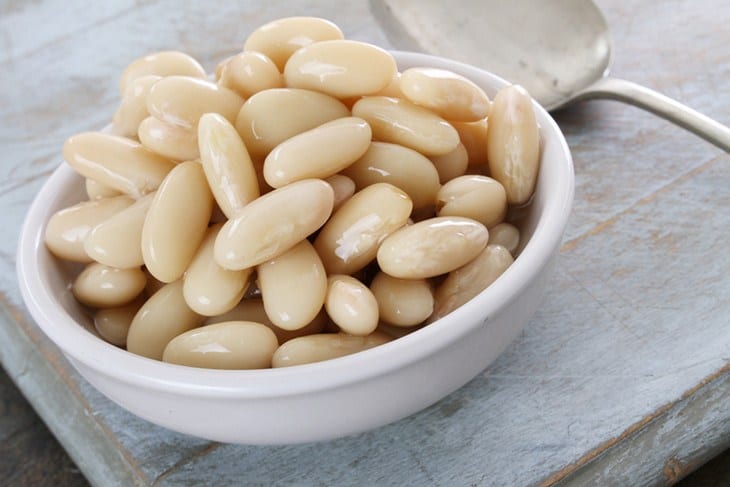
Cannellini beans or Italian white kidney beans are among the most widely used ingredients in Mediterranean cuisine, mostly Italian dishes.
In terms of shape and appearance, this white bean looks significantly different from a pinto bean. It has a kidney shape, and its color is milky – the same color as the navy beans.
Also, the cannellini ones have a nutty and creamy flavor, making them an integral component for many Italian dishes such as bruschetta or pasta.
For many people, especially those on a diet, this ingredient is a great source of nutrients. Adding it to your meals may lower your blood sugar and blood pressure level, improving your heart health.
Besides, cannellini beans may help protect your skin as the antioxidants, vitamins C and E in them serve as a protection against sun damage. What an amazing ingredient!
There is only one reminder while cooking them. As the coat of the raw beans is quite tough, it is judicious to soak them in water for at least 5 hours to get the best out of them.
6. Cowpeas
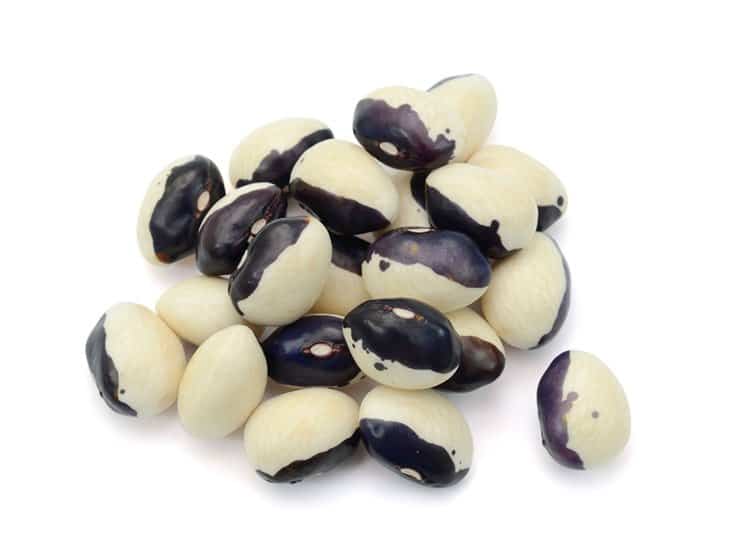
Another kind of legume we would like to introduce is cowpeas. This type of pea can be a great replacement for pinto beans.
Cowpeas have a creamy color with a large black spot, which looks like an eye, and thus many also call them Black-eyed peas. Much different from other kinds of legumes, their flavor is quite strong and salty.
There are two noteworthy points about this pea. Cowpeas are a great source of dietary fiber, making them an integral ingredient in a vegan’s diet.
Besides, cowpeas provide much higher amounts of protein and calories than pinto beans, thus a very suitable replacement for pinto beans.
High in nutrients and can be found worldwide, cowpeas are often used in India and South of US cuisine. Some of them, for example, are collard & black-eyed pea soup, Balti lobia, and Southwestern cowpea salad.
There is a small cooking tip: you should rinse the beans before cooking and soak them in water for 3 to 4 hours to reduce cooking time.
7. Adzuki Beans
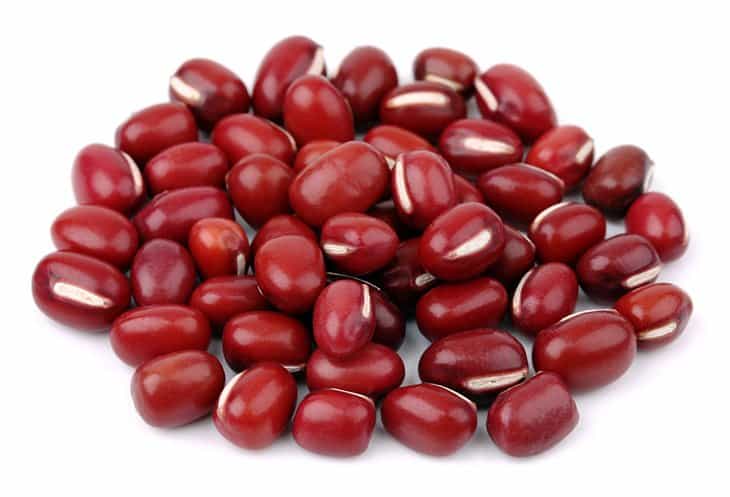
Being the most famous and common bean in Asia, especially in Eastern Asia, is Adzuki beans, also known as Red beans or Red mung beans. The majority of this component has a red-wine color, while others may be black or light yellow.
When it comes to flavor, the alternative’s nutty and sweet taste goes well with sweetened porridge or mochi, some of the most well-known dishes from East Asia.
The next fact may surprise you. Adzuki beans have a fair amount of nutrients. 100g of the ingredient can contain up to 329 calories and about 35% of a daily protein amount needed.
The beans also contain antioxidants, which help reduce the chance of having cancers or osteoporosis.
Before cooking Adzuki beans, you should soak them in cold water for 2 to 3 hours. It is also advisable that the ingredient be boiled for about 2 hours to remove all anti-nutritional compounds.
8. Soybeans
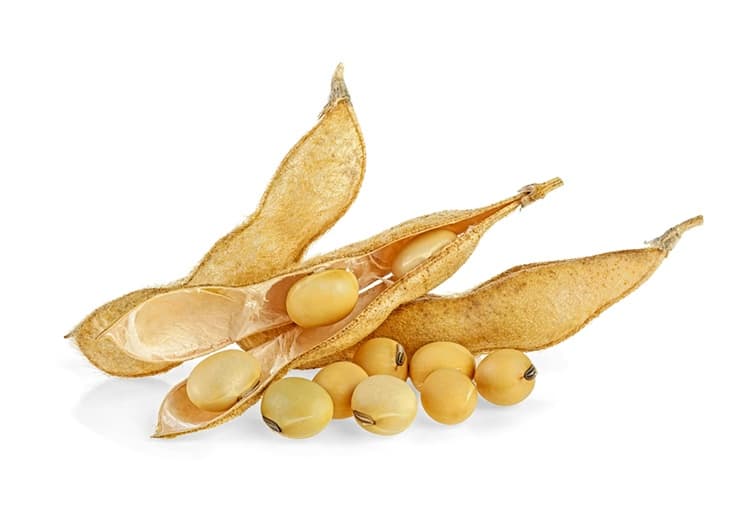
Soybeans are cultivated in East Asia, especially in North-Eastern China. They have a milky color and an oval shape.
After cooking, the beans have a rich and mildly sweet taste, making them one of the most multi-use ingredients in China, Korea, and other Eastern Asia countries. For the flavor, people use soybeans in Doenjang, a traditional Korean paste or Natto, one of the healthiest Japanese foods.
But what makes them so different from other kinds of beans like pinto beans is that you can make a delicious cup of milk from soybeans. Not only does the milk have a sweet and delicate flavor, but it is also beneficial to your health.
Soybeans contain a great number of nutritious compounds. In the legume family, soybeans provide a large number of calories, twice that of pinto beans.
Besides being one of the best accompaniments for many vegans and vegetarians, soybeans can also help prevent osteoporosis and cancers.
Unlike pinto beans, soybeans only need approximately 3 hours of soaking in water before cooking. So by using soybeans, you will reduce cooking time considerably.
9. Kidney Beans
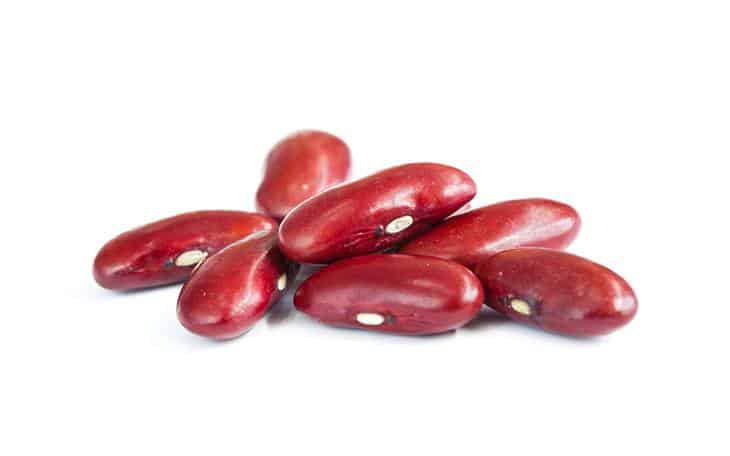
A well-known type of beans in many parts of the world, kidney beans are flat, red, and medium-sized. The name “kidney beans” has a reason; their appearance looks just like a human’s kidney.
Also, don’t be confused between Adzuki beans and kidney beans, for they are different. The kidney ones are much flatter and hold more benefits.
Like pinto beans, this perfect substitute has a mild and nutty flavor, making it an adequate substitute for pinto beans. Also, it can be a great addition to many dishes like curry or soup for that tasty flavor.
Kidney beans are a rich source of nutrients and thus a healthy component for well-balanced eating habits. By consuming this healthy ingredient every day, many people manage to lose weight and control their blood and heart pressure levels.
However, there are some drawbacks to this type of bean. It would be best if you did not eat raw beans due to the anti-nutritional compounds in them, which may severely affect your digestion system. So make sure to cook the ingredient properly.
10. Pigeon Peas
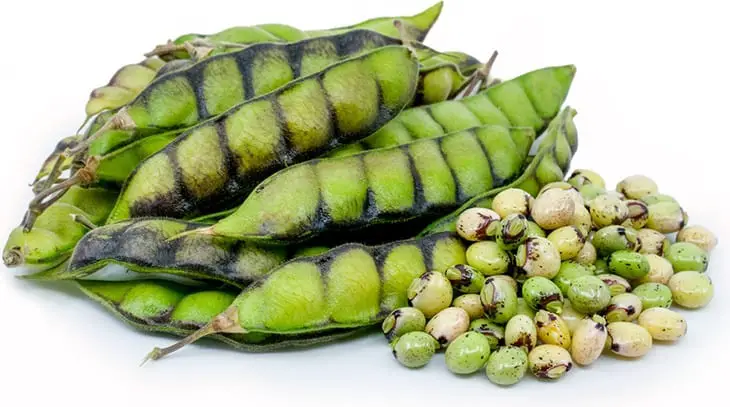
The legume family also has another type of bean that can serve as an alternative to pinto beans. That is pigeon peas from the tropic of Asia and sub-Saharan Africa.
Pigeon peas, or Reed gram beans, are small and have an oval shape. Overall, there are many kinds of this ingredient depending on their colors, like yellow or brown, for example; however, whichever type they are, pigeon peas are very popular in many countries for their nutrients.
Like pinto beans, pigeon peas are a great source of proteins, calories, vitamins, minerals, and dietary fiber, making them a great staple for many vegetarians.
Besides providing us many nutrients, pigeon peas are also a natural medicine to prevent increasing blood and heart pressure.
There are two types of pigeon peas you may find in a store: split and whole peas. Both need soaking in water before cooking, but the cooking time for each type is different.
Split peas only need 30 minutes, while whole peas need a much longer wait time – 4 to 6 hours.
If you still find it hard to find pigeon peas in the supermarket, don’t worry! Please take a look at our post – Pigeon Peas Substitutes.
11. Urad Beans
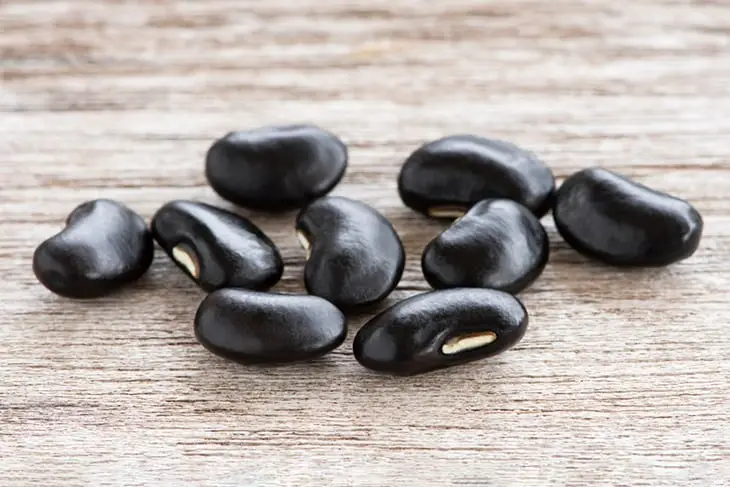
Urad beans, also known as Black gram beans or Vigna Mungo, are among the smallest ones in the legume family. They are mainly grown in South Asia, especially in India.
Urad beans are small, black, and have a small white germ. In terms of flavor, they can go with a variety of dishes. They can be the main star in dal or be a great ingredient in making idli and dosa batter.
Adding urad beans to your daily eating habits will help regulate your heart and blood pressure and reduce the chance of diabetes and cancers.
You should spend 6 to 8 hours soaking the beans before cooking them. Or, to decrease the soaking and cooking time, you can use the pressure cooker.
12. Lima Beans
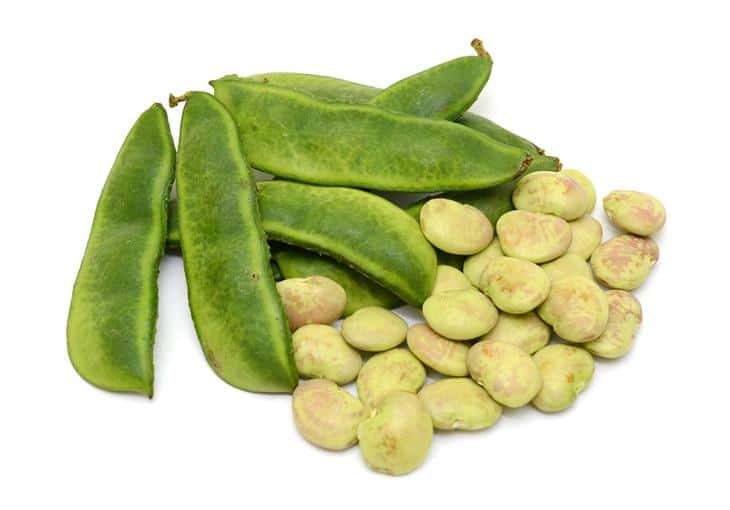
Originated in Central America and found by the Mayans and Aztecs, lima beans are large, flat, ivory-white, and have a kidney shape.
Lima beans have a flavorful and buttery taste, so some may call them Butter beans rather than Lima beans. Many household cooks consider them the star of several dishes, such as Casserole, Succotash, and soup for that flavor.
Like pinto beans, this component is a great source of vitamins, minerals, protein, and dietary fiber. So, if you run out of pinto beans, you can supersede them with lima beans.
When cooking this ingredient, it is ideal for immersing let them sit in fresh water for at least 5 hours to reduce cooking time.
Frequently Asked Questions
Is There Another Name For Pinto Beans?
Yes, of course. In Spain, people call them frijol pinto, which means speckled beans, while in South America, the name poroto frutilla (which means strawberry beans) is much more well-known.
Which One Is The Best Substitute For Pinto Beans?
With their mild and nutty flavor, we believe kidney beans can be the most suitable substitute among many great pinto beans alternatives.
Are Canned Beans As Good As Dried Beans?
If you are not in the mood for cooking, you can use canned beans. However, dried beans are much better if you want to make a more delicious and flavorful dish. The dried ones contain much more nutrients than the canned ones, and they also cost less!
Conclusion
And that is the end of our list – Substitutes For Pinto Beans. We hope you have made your decision. Thank you so much for spending your time reading our article!


